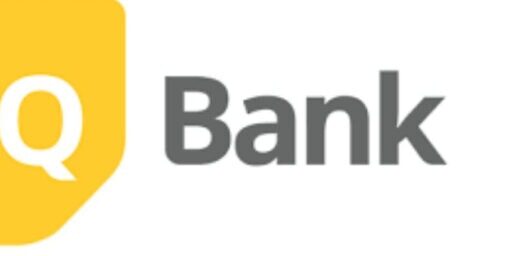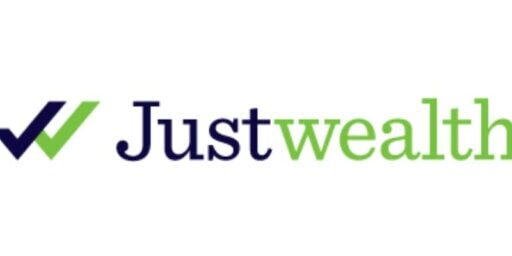Ways to Maximize the Canada Child Benefit (CCB)
Most Canadian parents don’t understand how they maximize their Canadian Child Benefit (CCB) and get paid thousands of government dollars every year!
We’ve been receiving this benefit since the Trudeau administration has been in power (2016), and I’m always tinkering with ways to max out this benefit. It’s worth my time since the CPP clawback basically means that parents in Canada might be paying an effective tax rate of 65%+ on every dollar they earn.
Here’s a recent video we did at the Canadian Financial Summit that looks at just how big a deal making more CCB money can be!
What is the Canada Child Benefit (CCB)?
Before we get started, a quick primer: what is the Canada Child Benefit? As the title suggests, it’s a program that helps subsidize the cost of raising kids. As you can see from my net worth updates, between daycare and activities, raising kids can get pricey!
The CCB has been lucrative compared to previous child benefit programs, the twist with this program is that the benefit decreases as your income increases – similar to old age security in that way – but much more aggressive compared to the OAS clawback! They look at a number of factors in the benefit calculation including:
- the number of children that live with you;
- the ages of your children;
- your adjusted family net income;
- your child’s eligibility for the child disability benefit.
How Much Do Parents Get From CCB in 2024?
How much can parents get from the CCB? If you qualify, you can receive up to:
- $7,437 per child under the age of 6.
- $6,275 per child aged 6 to 17.
That’s a maximum monthly CCB monthly payment of $619.75 per child and $522.91 per child respectively.
To put the cherry on the cake, the benefit is not taxable!
New payment amounts and income adjustments get made in July every year.
If your family net income is under $34,863, you would qualify for the maximum. Above that and your family will start to receive reduced benefits. Then there is a second income threshold at $75,537 where the clawback gets even more aggressive. According to the official website, the rules are as follows:
We start to reduce the amount of CCB you get when your adjusted family net income (AFNI) is over $34,863. The reduction is calculated as follows:
– Families with one eligible child: the reduction is 7% of the amount of AFNI between $34,863 and $75,537, plus 3.2% of the amount of AFNI over $75,537.
– Families with two eligible children: the reduction is 13.5% of the amount of AFNI between $34,863 and $75,537, plus 5.7% of the amount of AFNI over $75,537.
– Families with three eligible children: the reduction is 19% of the amount of AFNI $34,863 and $75,537, plus 8% of the amount of AFNI over $75,537.
– Families with four or more eligible children: the reduction is 23% of the amount of AFNI $34,863 and $75,537, plus 9.5% of the amount of AFNI over $75,537.
Those rules can be a bit complicated, the easiest way to calculate your family CCB benefit is to use the official calculator. You can get a ballpark number by using the clawback above to determine how much cash you’ll get given your specific spot in those variables.
Ways to Maximize Canada Child Benefit
Having explained the rules, it’s evident that the CCB can be a fairly generous program for a middle-class family.
BUT – only if you can lower the net taxable income for your family (which is line 23600 on your tax return for the DIY tax folks out there).
A busy, 3-child family, all under age 6, with a family net income of $70k/year would receive a benefit of a little over $1,300/month. At that income level, an extra $1k/month after-tax can make a massive difference!
Now, if we take a closer look at that hypothetical family, for every dollar on line 23600 (taxable net income) that they are making, they are basically paying a 19% tax in the form of a CCB Clawback. If you add a 30% combined provincial and federal income tax into the equation, you’re looking at an effective tax rate of about 50%.
Furthermore, if we think about a family with four children making $80,000 or more, their effective tax on each new dollar they year can be calculated as 23% initial CCB clawback + 9.5% increased CCB clawback + 30% combined income tax = roughly 63%. Who wants to pay 63% in taxes?!
Consequently, it makes a lot of sense to financially plan around keeping the family net income as low as possible. How is that possible? By maximizing tax deductions! Remember that tax deductions lower your net income.
Here are the most common ways to lower your taxable income.
RRSP Contributions
Every dollar that you contribute to an RRSP will result in more CCB (providing that you aren’t super high income). However, if you are a high-income family that doesn’t qualify for CBB, a large contribution may bring your income low enough to qualify. How much you get would depend on the number and age of your kids – best to use the calculator mentioned above to get exact numbers.
What this means is that every dollar you can contribute to your RRSP, is going to have an increased value equal to the amount of the CCB clawback that you’re avoiding! Remember, this isn’t deferred taxation like the investments in an RRSP – this is straight non-taxable cash from the government!
Related: RRSP tax deductions guide.
Childcare Costs
If you have kids in daycare, you can claim $8,000/child/year under the age of 7, and $5,000/child/year aged 7 to 16. If you have a couple of kids in full-time daycare, that would result in reducing the family net income by $16,000 (assuming the lower income spouse makes at least $16k income/year).
For our situation above where a 2-child family has an effective tax rate of close to 50%, you could be saving yourself $8,000 in taxes and CBB clawback just by claiming your childcare costs in 2024!
Leveraged Investment Accounts
If you borrow to invest, like in a business, the stock market, or rental real estate – your interest paid could be tax deductible. Also, if you have a personal business or rental real estate, and report a loss, this would act as a tax deduction as well. For us, we leverage our home equity to invest in dividend stocks by using the smith manoeuvre.
So I can make use of these tax deductions as well.
Other Tax Deductions
Any tax deduction that lowers your taxable income means more money saved on income tax, and sometimes WAY more money added to next year’s CCB payments – so it’s worth considering the following as well:
- Medical costs
- Eligible union dues are tax deductible
- Moving expense can be tax deductible
- “Other” employment expenses that your employer requires as part of your contract
What are the CCB Dates for 2024?
Canadian Child Benefits will be paid on the following dates in 2024:
- January 19, 2024
- February 20, 2024
- March 20, 2024
- April 19, 2024
- May 17, 2024
- June 20, 2024
- July 19, 2024 (new benefit year begins)
- August 20, 2024
- September 20, 2024
- October 18, 2024
- November 20, 2024
- December 13, 2024
Are You Getting the Most Out of the Canadian Child Benefit?
The Canada Child Benefit is a program that helps subsidize the cost of raising kids and offers a generous non-taxable benefit. Lowering your net taxable income is the key to maximizing your CCB payments and it can make a huge difference for higher-earning families and/or for families with several children.
Strategies such as borrowing to max out your RRSP contribution, or perhaps even using a TFSA withdrawal to maximize an RRSP contribution, can make a big difference when you’re looking at effective tax rates of more than 50%!
I’ve also advised friends that were looking at the tradeoffs of going back to work part-time vs full-time to consider if it is worth it, if you’re essentially going to be paying a 50-70% tax rate while your children are still young.
This is often a major consideration and sometimes it makes more sense for one (or both?!) parent to work part-time if spending a lot of time with their young children is a priority and something that adds to their life.










We have three kids and get about $1000 CCB every month. I have been a stay at home mom for the past 9 years, but just started working part-time. Do you know if I will have to pay back some of the CCB payment next year? I tried to find info on the CRA website but didn’t have any luck. Thanks!
Morgan, I do not believe you will have to pay back CCB, but you may see a reduced CCB benefit next year (depending on if your family income is higher this year or not).
While this won’t maximize your CCB, I have consistently put every dime of that payment into my children’s RESPs and enjoyed the 20% top up on that. I’m nearly 8 years into that process and I’m really starting to see the compound growth!
Very smart Adam! Another option is to deposit the CCB into an RRSP to further reduce net income the following year (providing the RRSP isn’t already maxed out).
Favorite part about this article is that the lowest test quote included in this article is 70k household earnings.
I’d be happy to run more scenarios. What did you have in mind? For your personal scenario, I suggest to use this calculator:
https://apps.cra-arc.gc.ca/ebci/icbc/prot/ntr?request_locale=en_CA
Flow through shares are another way to reduce income. In Quebec, the child care tax credit is also income tested, so you get more $ back for your child care expenses the lower your AFNI is.
Thanks for the info, I did not know that about Quebec.
And people say kids are expensive… they actually make you money! :p
All joking aside, I like the that CCB is now tax free. Our oldest will turn 6 later this year so looks like our CCB amount will be reduced. Not looking forward to that.
Maybe another path to FI is to have more children? ;)
Good one!
We have 8 children from 3 to 23 but it was the younger ones that allowed our family to “cash in” with all the changes to the CCB.
8 children!? I thought that having 2 was a lot. :) The good thing about having more is that the older kids can help take care of the younger ones. Safe to assume that one spouse is stay at home?
Can’t wait to see what our CCB is this year since my income was low from last year due to mat leave.
One would have to run the numbers with # of kids, income, etc but maybe there is a benefit in only claiming RRSP deductions every other year?
While my income is pretty constant, my wife’s is variable when she is on maternity leave for example. If I was to have a big RRSP claim the year she is on maternity leave, the following year we would have some VERY generous CCB payments.
Best bet is to run through the calculator with variable net family income, then decide on your RRSP contributions. But yes, a big contribution, combined with a lower income year (ie. mat leave) would result in a larger CBB the following year.